There are too many ancient buildings in China. Everyone can say a few building names casually, but when it comes to classic ancient buildings, everyone will have different views. China’s top 12 classic ancient buildings give people a shocking feeling.
1.Palace Museum 故宫博物院
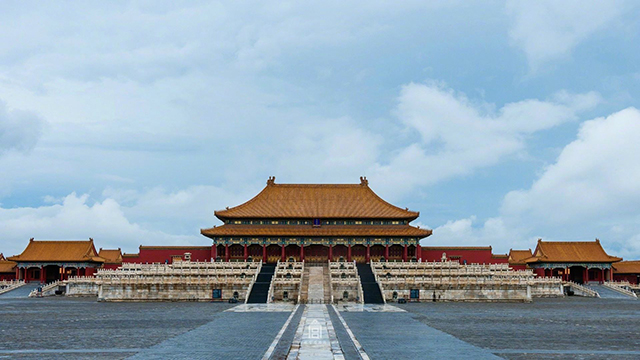
Beijing Palace Museum, Forbidden City, Royal Palace, National 5A-level tourist attractions, the world’s top five palaces, and world cultural heritage. Founded on October 10, 1925, it is located in the Forbidden City of the Forbidden City in Beijing. It is a comprehensive Chinese museum built on the basis of the imperial palaces of the Ming and Qing Dynasties and their collections. It is also the largest museum of ancient culture and art in China. Its cultural relics collections are mainly from old collections in the Qing Dynasty. Demonstration base for patriotism education. From January 1, 2014, the Beijing Palace Museum is closed almost every Monday. The Beijing Palace Museum is located in the Forbidden City, the Forbidden City of Beijing. Beijing Forbidden City is the first batch of national key cultural relics protection units and the first batch of national 5A-level tourist scenic spots. It was included in the “World Cultural Heritage List” in 1987.
2.Potala Palace 布达拉宫
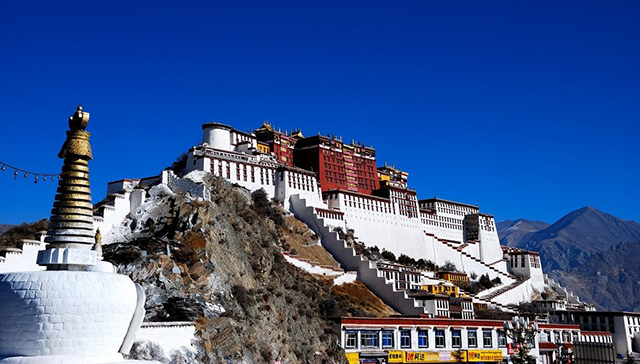
The Potala Palace is located on the Mabuli Mountain in the northwest of Lhasa, the capital of the Tibet Autonomous Region of China. It is the magnificent building with the highest altitude in the world, integrating palaces, castles and monasteries. It is also the largest and most complete ancient palace in Tibet Buildings. In front of the Potala Palace is the Potala Palace Square, which is the highest city square in the world. The Potala Palace is a holy place for Tibetan Buddhism, and there are countless pilgrims and tourists every year. In March 1961, the State Council was listed as the first batch of national key cultural relics protection units; in December 1994, UNESCO listed it as a world cultural heritage; in January 2013, the National Tourism Administration was also listed as a national AAAAA tourist attraction.
3.Summer Palace 颐和园
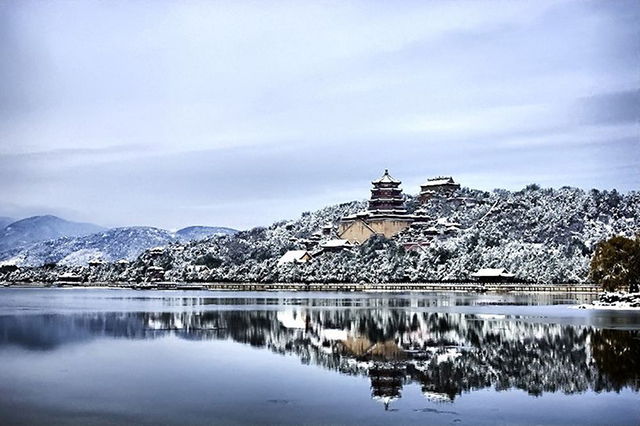
The Summer Palace, the Royal Garden Museum, a national key cultural relics protection unit, a world heritage, and a world-famous tourist attraction. The Royal Garden of China during the Qing Dynasty, formerly known as Qingyi Garden, is located in the western suburbs of Beijing, 15 kilometers away from the urban area, covering an area of about 290 hectares, adjacent to the Old Summer Palace. It is a large landscape garden built on the basis of Kunming Lake and Wanshou Mountain, taking Hangzhou West Lake as a model and drawing on the design techniques of Jiangnan Gardens. It is also the most well-preserved royal palace palace, known as the “Royal Garden Museum” Is also a national key tourist attraction. On March 4, 1961, the Summer Palace was announced as the first batch of national key cultural relics protection units, together with the Chengde Mountain Resort, Humble Administrator’s Garden, and Lingering Garden, which were also announced as the four famous gardens in China.
4.Yongle Palace 永乐宫
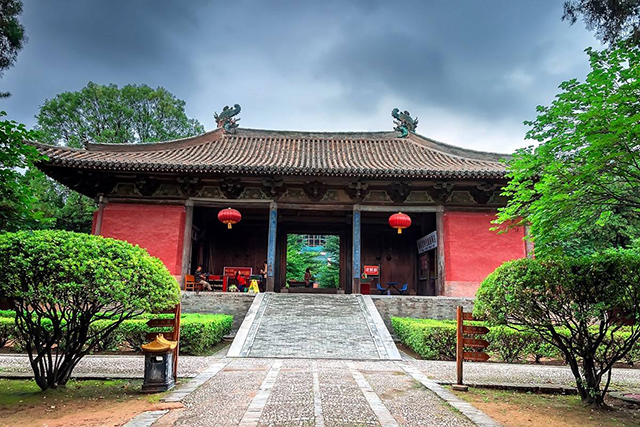
Yongle Palace, named after the former site in Yongle Town, is also known as Dachunyang Longevity Palace. Yongle Palace is a national key cultural relics protection unit. The original site is located in Zhaoxian Village, Yongle Town, Ruicheng County, Shanxi Province. The current site is located on the east side of Longquan Village, 3 kilometers north of Ruicheng County. Yongle Palace was built in the Yuan Dynasty, with a total of more than 110 years before and after the construction period. Four magnificent buildings of Longhu Temple, Sanqing Hall, Chunyang Hall, and Chongyang Hall are arranged on the central axis, absorbing the “building French style” of the Song Dynasty and Liao and Jin. The “column reduction method” of the period formed its own unique style. Yongle Palace is famous in the world for murals. It is comparable to Dunhuang murals. Its high artistic value and large number are rare in the world.
5.Qin Shihuang Terracotta Army Museum 秦始皇兵马俑博物馆
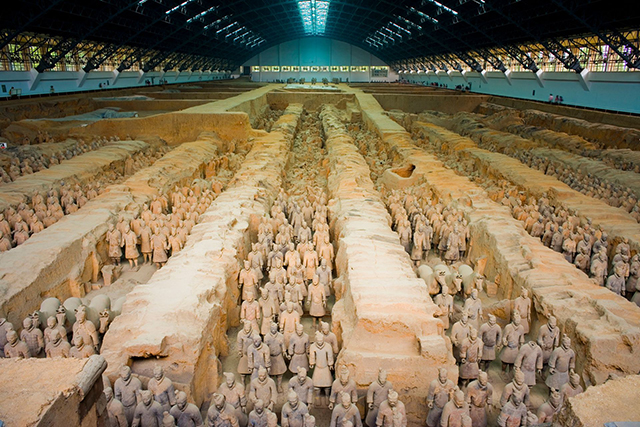
Terracotta Warriors and Horses of Qin Shihuang, a world cultural heritage, one of the eight wonders of the world, a national AAAAA tourist attraction, and a national key cultural relics protection unit. The Museum of Terracotta Warriors and Horses of Qin Shihuang is located in the east of Lintong District, Xi’an, Shaanxi Province. It is a large burial pit in the mausoleum of Qin Shihuang, the first feudal emperor of China, with an area of 2.18 million square meters. The museum is based on the Terracotta Warriors and Horses of Qin Shihuang. It is a ruins museum built on the original site of the Terracotta Warriors and Horses. It is also the largest ancient military museum in China. The terracotta warriors and pits of Qin were discovered from 1974 to 1976, and the Museum of Terracotta Warriors of Qin Shihuang was opened to the world at home and abroad in 1979. The discovery of the Terracotta Army is known as the eighth wonder of the world and a great discovery in the archaeological history of the twentieth century.
6.Qianling Museum 乾陵博物馆
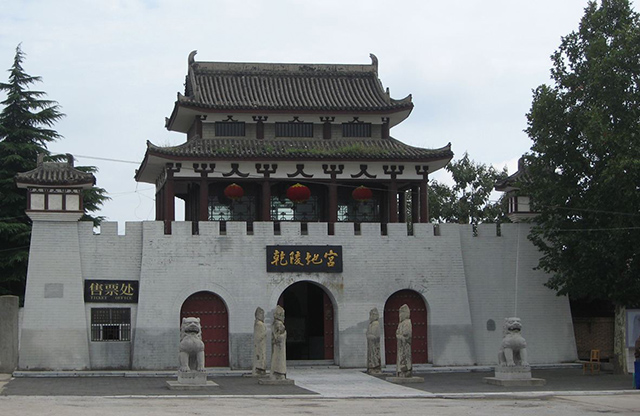
The Qianling Museum is the Chinese Mausoleum Museum. Located in the tomb of Princess Yongtai, southeast of Qianling, Qianxian County, Shaanxi Province, was established in 1978. Its predecessor was the Qianling Cultural Relics Administration established in 1960. Qianling is the burial place of Tang Gaozong Li Zhi (628-683) and the only female emperor Wu Zetian (624-705) in Chinese history. It is the only tomb of a couple emperor in the country and the world. The mausoleum is 80 kilometers away from the ancient capital of Xi’an, and the west (An) Lan (state) national road runs along the mausoleum. Qianling is a national key cultural relics protection unit and a famous resort for sightseeing on the west line of Shaanxi Province.
7.Zhaozhou Bridge Scenic Area 赵州桥景区
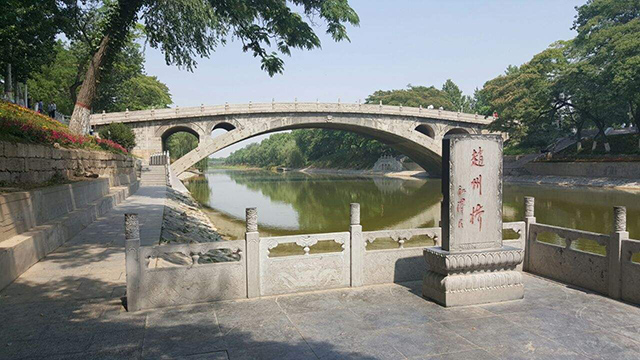
The scenic area of Zhaozhou Bridge includes Zhaozhou Bridge (Anji Bridge, commonly known as Dashi Bridge), built in AD 595-605 (from the late Emperor Sui Kaihuang to the first year of Daye. Zhaozhou Bridge is a giant single-hole open-shoulder stone arch bridge, The main arch is made of 28 arch rolls juxtaposed longitudinally, the bridge length is 64.4 meters, the net span is 37.02 meters, the bridge body is located on the natural foundation). Zhaozhou Bridge Park was built in 1986. In 1999, the park area expanded from 37 acres to 132 acres. According to the overall planning of the expansion of the scenic area, the construction projects that need to be built include: Zhaozhou Bridge Museum, Zhaozhou Bridge Scenic Area Sewage River Reconstruction, Pingthorn Mountain Renovation Project, Zhaozhou Bridge Scenic Avenue, Famous Bridge Cultural Expo Park, Luban Award Exhibition Center, Leisure and Recreation Park etc.
8.Yellow Crane Tower Park 黄鹤楼公园
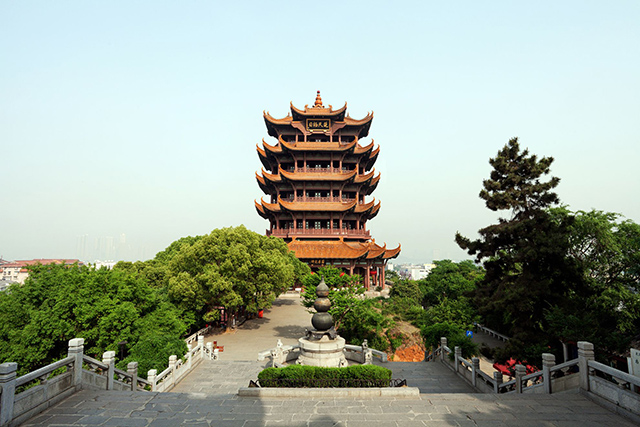
Yellow Crane Tower is located on the top of Wuchang Snake Mountain on the south bank of the Yangtze River in Wuhan City, Hubei Province. It is a national 5A-level tourist scenic spot and enjoys the title of “the first floor of the world’s Jiangshan” and “the world’s superb scenery”. The Yellow Crane Tower is an iconic building in Wuhan, and together with Qingchuan Pavilion and Guqintai, it is also called “Three Famous Attractions in Wuhan”. The building is also known as the “Three Famous Buildings in Jiangnan” together with Yueyang Tower in Hunan and Chang Teng Wang Pavilion in Southwest Changjiang, Jiangxi. The whole building has a unique ethnic style, exuding the spirit, temperament and charm of traditional Chinese culture. It intersects with the Wuhan Yangtze River Bridge at the foot of the Snake Mountain; from the top of the building, you can see the scenery of Wuhan’s three towns. The Yellow Crane Tower is now a national AAAAA tourist attraction and a national key cultural relics protection unit.
9.Yueyang Tower 岳阳楼
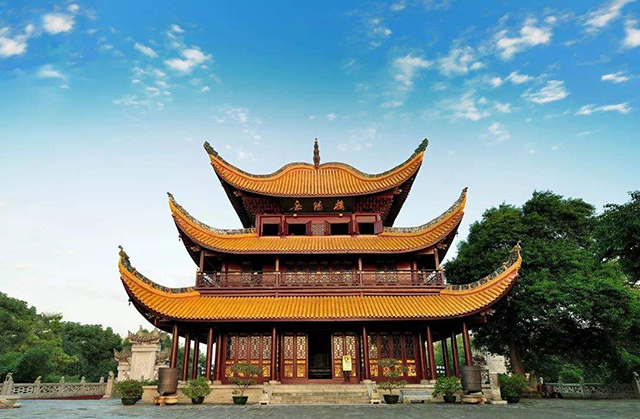
Yueyang Tower is located on the west wall of the ancient city of Yueyang City, Hunan Province. It overlooks the Dongting and looks forward to Junshan. It has been known as “Dongting Tianxiashui, Yueyang Tianxialou” since ancient times. Daming Building”. In January 1988, it was designated as the national key cultural relics protection unit by the State Council. The main building of Yueyang Tower is 19.42 meters high, 14.54 meters deep and 17.42 meters wide. It is a three-story, four-post, cornice, helmet top, and pure wood structure. The four golden pillars of Nanmu straight through the roof of the building, and the surroundings are tenoned together with corridors, arches, rafters and purlins, forming a whole. Yueyang Tower, as the only ancient building in the three famous buildings that maintains its original appearance, its unique helmet-top structure reflects the clever wisdom of the ancient working people and the ingenious design and skills of skilled craftsmen.
10.Yuewang Tower 越王楼
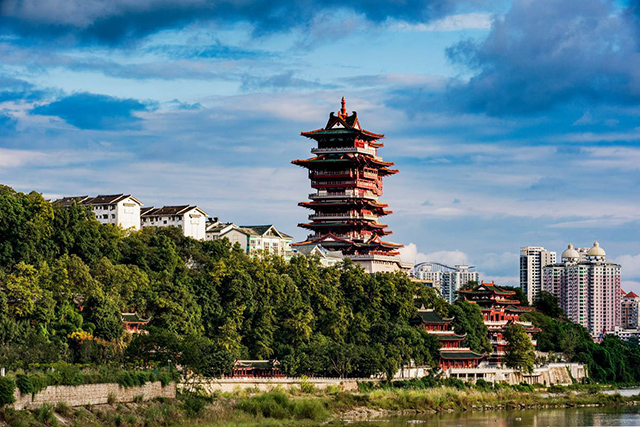
Yuewang Tower is located on the top of Guishan Mountain in Mianyang City, Sichuan Province. It was built by Tang Taizong Li Shimin’s eighth son Yue Wang Lizhen when he was in the history of Mianzhou. It was built in the year of Emperor Gaozong of Tang Dynasty. Hundreds of feet), at the top of the four famous buildings (Tengwang Pavilion is nine feet tall, Huanghe Tower is six feet tall, Yueyang Tower is three feet tall). The restored Yuewang Tower is not inferior to that of the previous year. The height of 99 meters is still the highest in the country’s antique buildings (now the Tengwang Pavilion is 57.2 meters high, the Yellow Crane Tower is 52.6 meters high, the Stork Magpie Tower is 72 meters high, and the Yueyang Tower is 32 meters high), so there is “Yuewang Tower Domineering, Yellow Crane Tower Atmospheric , Teng Wangge’s talent, Yueyang Tower’s show” said.
11.Tengwang Pavilion 滕王阁
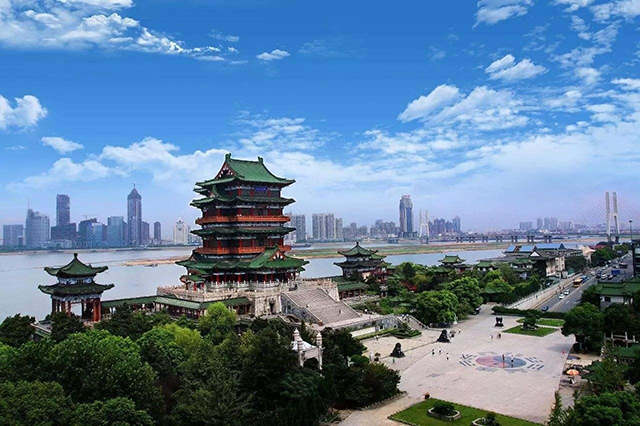
Tengwang Pavilion, one of the three famous buildings in Jiangnan, is located on the east bank of Ganjiang River in the northwest of Nanchang City, Jiangxi Province. It was built in the four years of Tang Yonghui (653 AD). It was named after the establishment of Teng Wang Li Yuanying, the younger brother of Tang Taizong Li Shimin. It was also due to the poetry of the early Tang Dynasty poet Wang Bo that “Luo Xia and Lone Frog fly together, and autumn and water will be the same forever”. Tengwang Pavilion, Huanghe Tower in Wuhan, Hubei, and Yueyang Tower in Hunan are also called “Three Famous Jiangnan Towers”. The Tengwang Pavilion in the history has been rebuilt a total of 29 times, and has been destroyed and built repeatedly. In January 2001, Nanchang Tengwang Pavilion was approved by the National Tourism Administration as the first batch of national AAAA-level tourist attractions.
12.Suzhou gardens 苏州园林
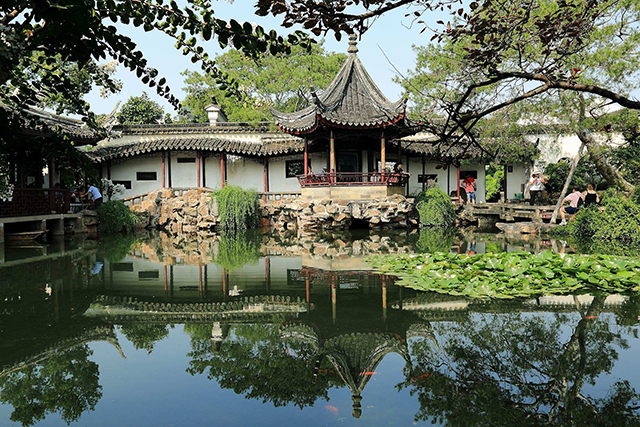
Suzhou Garden is also known as “Suzhou Classical Garden”, a world cultural heritage, a national AAAAA tourist attraction, one of the top ten scenic spots in China. It is known as the “garden city” and enjoys the reputation of “Jiangnan gardens are the world, Suzhou gardens are Jiangnan” , Known as “rebuild the heaven and earth within close proximity”, is the leader and pride of Chinese garden culture, and is an outstanding representative of Chinese gardens. Suzhou Gardens has its unique historical position and value in the history of world gardening. With its superb artistic skills in freehand landscapes, it contains strong traditional Chinese thoughts and cultural connotations, and it is a model of oriental civilized gardening art. Suzhou is known as the “city of gardens”.